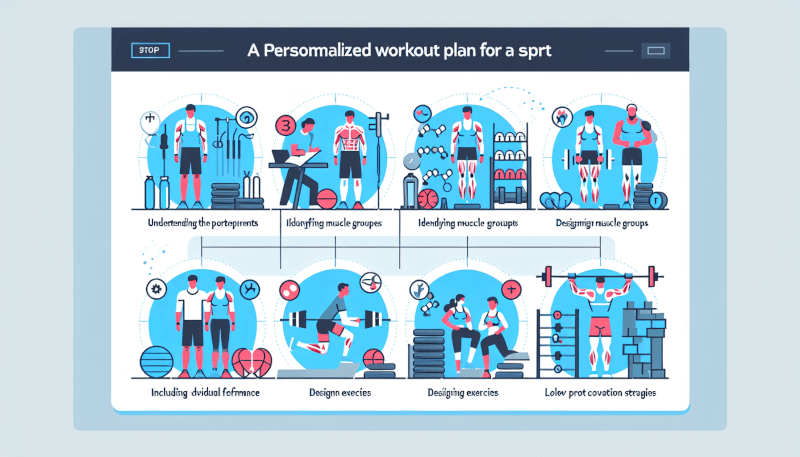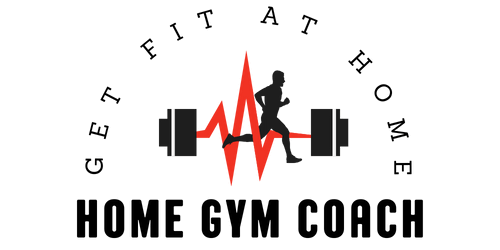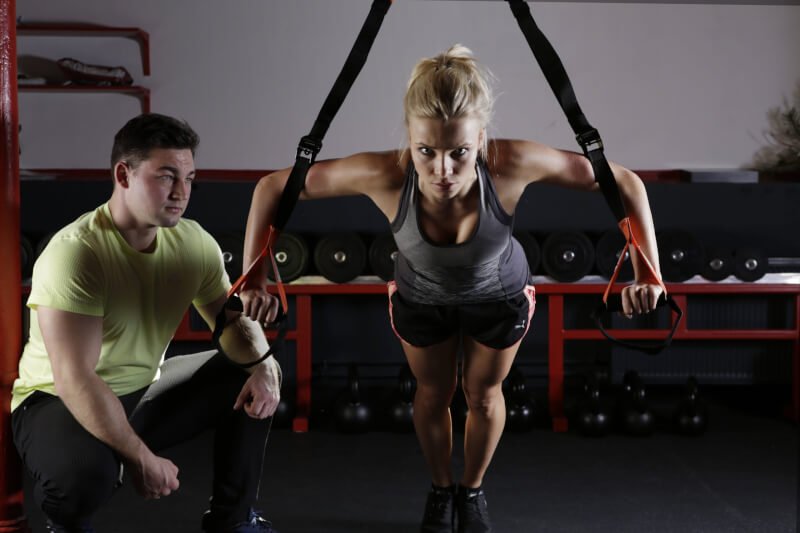Are you an athlete looking to take your performance to the next level? If so, creating a custom workout plan tailored specifically to your sport is essential. In this article, we will explore the steps to help you design a personalized training regimen that targets the key muscles and skills needed to excel in your chosen sport. From identifying your individual needs to incorporating sport-specific exercises, this guide will set you on the path to success. Get ready to elevate your game and unleash your full athletic potential.
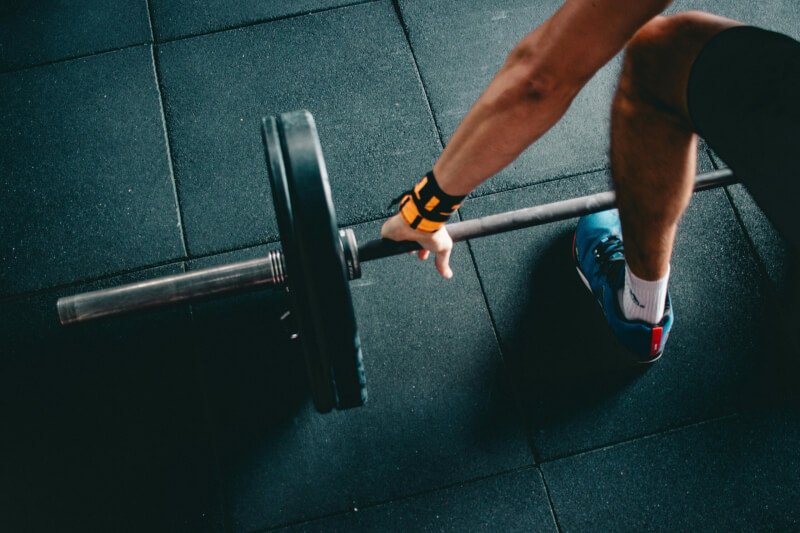
Understanding the Sport
Analyzing the movements and demands of the sport: To create a custom workout plan for a specific sport, it is crucial to first understand the movements and demands of the sport. Take the time to carefully analyze the various movements involved, whether it be running, jumping, throwing, or specific technical skills required. By examining these movements, you can identify the specific muscle groups that are activated and the physical requirements needed for optimal performance.
Identifying the key muscle groups used in the sport: Once you have analyzed the movements, it’s important to identify the key muscle groups used in the sport. For example, if you are training for basketball, you would want to focus on exercises that target the muscles in your legs for jumping and agility, as well as the upper body for shooting, passing, and defending. By identifying these key muscle groups, you can tailor your workout plan to specifically strengthen and condition these areas.
Considering the physical requirements for the sport: Every sport has different physical requirements. Some sports require endurance, while others require explosive power or flexibility. Take the time to consider the specific physical requirements for the sport you are training for and incorporate exercises and training methods that will help you excel in those areas. By understanding the physical demands of the sport, you can design a workout plan that focuses on developing the necessary attributes for optimal performance.
Setting Goals
Determining overall objectives: Setting clear overall objectives is essential for creating a custom workout plan. Ask yourself what you want to achieve through your training. Do you want to increase your speed, improve your strength, or enhance your agility? By identifying your overall objectives, you can have a clear direction and purpose in your training.
Setting specific performance goals: Along with overall objectives, it’s important to set specific performance goals. These goals should be measurable and achievable within a certain timeframe. For example, if your overall objective is to increase your speed, a specific performance goal could be to improve your 100-meter sprint time by one second within six months. Setting specific performance goals will help you stay motivated, track your progress, and ensure that your training is focused and effective.
Creating a timeline for progress: Once you have established your overall objectives and specific performance goals, it’s crucial to create a timeline for progress. Break down your goals into smaller, achievable milestones and set target dates for each milestone. This timeline will serve as a roadmap to keep you on track and ensure that you are making consistent progress towards your objectives.
Assessing Current Fitness Level
Evaluating strength, endurance, and flexibility: Before designing a workout plan, it’s essential to assess your current fitness level. Evaluate your strength, endurance, and flexibility through various assessments and tests. This will give you a baseline measurement of your fitness level and help you identify areas that need improvement.
Identifying areas that need improvement: Once you have evaluated your current fitness level, you can identify areas that need improvement. Are you lacking in strength, endurance, or flexibility? Are there any muscle imbalances or weaknesses that need to be addressed? By identifying these areas, you can create targeted exercises and training methods to address these specific weaknesses.
Recording baseline measurements: It’s important to record baseline measurements of your strength, endurance, and flexibility. This will provide a benchmark for tracking your progress and evaluating the effectiveness of your training plan. Take note of your current performance in various exercises, such as maximum weight lifted or duration of a certain exercise, and record any measurements, such as body weight, body fat percentage, or range of motion. These baseline measurements will help you monitor your progress and make adjustments to your training plan as necessary.
Designing the Workout Plan
Developing a periodized training schedule: When designing a custom workout plan for a specific sport, it’s beneficial to develop a periodized training schedule. Periodization involves breaking down your training into different phases, each with a specific focus and intensity level. Common phases include the off-season, pre-season, and in-season. By incorporating periodization into your training plan, you can properly structure your workouts to ensure optimal performance at the right times.
Incorporating different training phases: Within your periodized training schedule, it’s important to incorporate different training phases. Each phase should have a specific purpose and target different aspects of your fitness. For example, during the off-season, you may focus on building strength and endurance, while during the pre-season, you may shift your focus towards sport-specific movements and power. By incorporating different training phases, you can systematically progress and target different aspects of your fitness.
Including specific exercises for each muscle group: To ensure a well-rounded workout plan, it’s important to include specific exercises for each muscle group. Based on your analysis of the sport and the key muscle groups involved, select exercises that target and develop those specific areas. For example, if you are training for soccer, you may include exercises such as squats and lunges for leg strength, shoulder presses for upper body strength, and core exercises for stability and balance. By including specific exercises for each muscle group, you can ensure that you are addressing all areas necessary for optimal performance.

Choosing the Right Exercises
Selecting compound exercises for overall strength: When choosing exercises for your workout plan, it’s beneficial to select compound exercises that target multiple muscle groups simultaneously. Compound exercises, such as squats, deadlifts, and bench presses, not only build overall strength but also improve coordination and stability. By incorporating compound exercises into your training, you can efficiently develop overall strength and functional movement patterns that are essential for athletic performance.
Incorporating sport-specific movements: To enhance your performance in a specific sport, it’s essential to incorporate sport-specific movements into your workout plan. For example, if you are training for tennis, practicing specific shots and footwork drills will help improve your agility and technique on the court. By incorporating these sport-specific movements, you can simulate the demands of the sport and improve your skill level and efficiency.
Including exercises for balance and agility: Balance and agility are two important components of athletic performance. Including exercises that challenge your balance and improve your agility can significantly enhance your overall performance. Exercises such as single-leg squats, lateral lunges, and ladder drills can help improve your stability, coordination, and quickness. By including exercises for balance and agility, you can enhance your ability to react swiftly and move efficiently during sport-specific scenarios.
Cardiovascular Conditioning
Incorporating aerobic exercises for endurance: Cardiovascular conditioning is essential for enhancing endurance in sports that require sustained effort over long periods of time. Incorporate aerobic exercises, such as running, cycling, or swimming, into your workout plan to develop cardiovascular endurance. Gradually increase the duration and intensity of these exercises to challenge your cardiovascular system and improve your overall endurance.
Implementing interval training for sport-specific energy systems: Interval training is a valuable tool for improving sport-specific energy systems. By alternating between periods of high-intensity exercise and rest or low-intensity exercise, you can simulate the energy demands of your sport and improve your ability to recover quickly. For example, if you are training for basketball, incorporate high-intensity sprints followed by active recovery periods to mimic the stop-and-go nature of the game. Implementing interval training will enhance your ability to maintain a high level of performance throughout a match or competition.
Gradually increasing intensity and duration: As you progress in your training, it’s important to gradually increase the intensity and duration of your cardiovascular exercises. This progressive overload will continue to challenge your cardiovascular system and ensure continuous improvement. Gradually increase your intensity by adjusting the speed, resistance, or incline of your exercises, and progressively extend the duration of your workouts to build endurance.
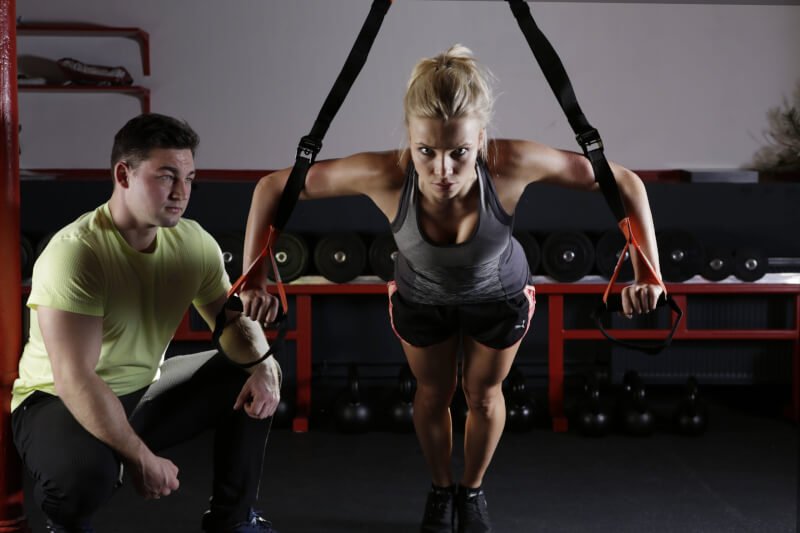
Strength and Power Training
Using resistance training to build strength: Resistance training is crucial for building strength and power. Incorporate exercises that target the major muscle groups used in your sport, such as squats, deadlifts, bench presses, and rows. Start with lighter weights and gradually increase the resistance as you become stronger. Aim for 2 to 3 sets of 8 to 12 repetitions for each exercise, focusing on proper form and technique. Resistance training will not only improve your overall strength but also enhance your muscle coordination and joint stability.
Incorporating plyometric exercises for power: Plyometric exercises are explosive movements that involve rapid stretching and contracting of muscles, such as jump squats, box jumps, and medicine ball throws. Incorporate plyometric exercises into your training to develop power and explosiveness. Start with low-intensity plyometric exercises and gradually progress to more advanced movements as your strength and coordination improve. Plyometric training will enhance your ability to generate force quickly and effectively, ultimately improving your performance in explosive movements.
Periodically testing and adjusting training loads: It’s important to periodically test and adjust your training loads to ensure continuous progress. Assess your strength and power levels by performing specific tests or exercises, such as a one-repetition maximum (1RM) test or vertical jump test. Based on your test results, adjust your training loads by increasing the resistance or intensity of your exercises. Regularly evaluating and adjusting your training loads will help you avoid plateauing and ensure that you are continually challenging your muscles for optimal strength and power gains.
Flexibility and Mobility
Incorporating dynamic stretching exercises: Flexibility and mobility are key components of athletic performance. Incorporate dynamic stretching exercises into your warm-up routine to improve your range of motion and prepare your muscles for physical activity. Dynamic stretches involve controlled, repetitive movements that take your muscles through a full range of motion. Examples of dynamic stretches include leg swings, arm circles, and walking lunges. By incorporating dynamic stretching exercises, you can enhance your flexibility and joint mobility, reducing the risk of injury and improving your overall performance.
Including exercises for joint mobility: Joint mobility is essential for maintaining proper movement patterns and preventing injury. Incorporate exercises that focus on joint mobility, such as hip circles, shoulder rotations, and ankle mobility exercises. These exercises target the specific joints used in your sport and help improve their range of motion. By including exercises for joint mobility, you can enhance your overall movement quality and reduce the risk of joint-related injuries.
Implementing regular flexibility training: In addition to dynamic stretching, regular flexibility training is crucial for maintaining and improving flexibility. After each workout or training session, dedicate time to static stretching exercises. Static stretches involve holding a stretch at the end of its range of motion for a certain period. Focus on the major muscle groups used in your sport and hold each stretch for at least 20 to 30 seconds. Regular flexibility training will help improve muscle elasticity, reduce muscle soreness, and enhance overall joint mobility.
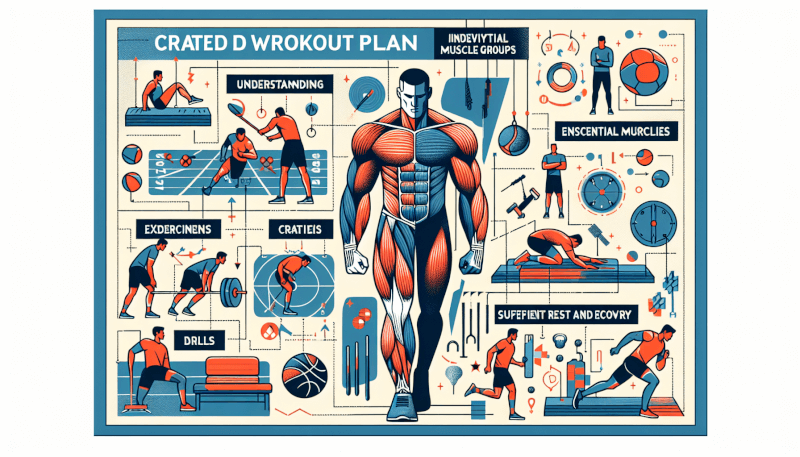
Rest and Recovery
Designing rest days into the training schedule: While training is important, rest and recovery are equally crucial for optimal performance. Designate specific rest days into your training schedule where you can allow your body to recover and adapt to the stress of training. These rest days are essential for muscle repair, glycogen replenishment, and overall physical and mental rejuvenation. Listen to your body and give yourself adequate time to rest and recover to avoid overtraining and potential injuries.
Including active recovery methods: In addition to rest days, incorporate active recovery methods into your training plan. Active recovery involves engaging in light activities or low-intensity exercises that promote blood flow and aid in recovery. Examples of active recovery include light jogging, walking, swimming, or yoga. Active recovery can help reduce muscle soreness, improve circulation, and enhance flexibility. By including active recovery methods, you can hasten the recovery process and be ready to perform at your best during your next training session.
Recognizing the importance of sleep: Sleep is often overlooked but plays a vital role in athletic performance and overall health. Aim for 7 to 9 hours of quality sleep each night to maximize your recovery and allow your body to repair and regenerate. During sleep, your body releases growth hormones, repairs muscle tissues, and boosts immune function. Make sleep a priority in your training plan to optimize your physical and mental well-being.
Seeking Professional Advice
Consulting with a coach or trainer: If you are unsure about creating a custom workout plan for your specific sport, it’s beneficial to consult with a coach or trainer who specializes in your sport. A knowledgeable professional can provide expert guidance and create a personalized workout plan based on your individual needs and goals. They can assess your strengths and weaknesses, guide you through proper technique, and ensure that you are training in a safe and effective manner.
Getting recommendations from experienced athletes: Another valuable source of advice is experienced athletes who have excelled in your sport. Seek out recommendations from individuals who have achieved success and have a deep understanding of the physical demands and training methods required. They can provide insights, share their training experiences, and offer tips and strategies that have proven successful in their own journeys.
Considering individual body type and capabilities: It’s important to consider your individual body type and capabilities when creating a custom workout plan. Every individual is unique, and what works for one person may not work for another. Take into account your strengths, weaknesses, and physical limitations. Modify exercises or training methods as needed to suit your individual needs, ensuring that you are working within your capabilities while still challenging yourself appropriately.
Creating a custom workout plan for a specific sport requires careful analysis, goal setting, and consideration of your current fitness level. By understanding the movements and demands of the sport, identifying key muscle groups, and considering the physical requirements, you can design a targeted workout plan that will enhance your performance. By incorporating specific exercises, cardiovascular conditioning, strength and power training, flexibility and mobility exercises, and rest and recovery strategies, you can optimize your training and reach your full athletic potential. Don’t be afraid to seek professional advice and learn from experienced athletes to ensure that your workout plan is tailored to your individual needs and capabilities. With dedication, consistency, and a well-designed workout plan, you can excel in your chosen sport and achieve your athletic goals.
